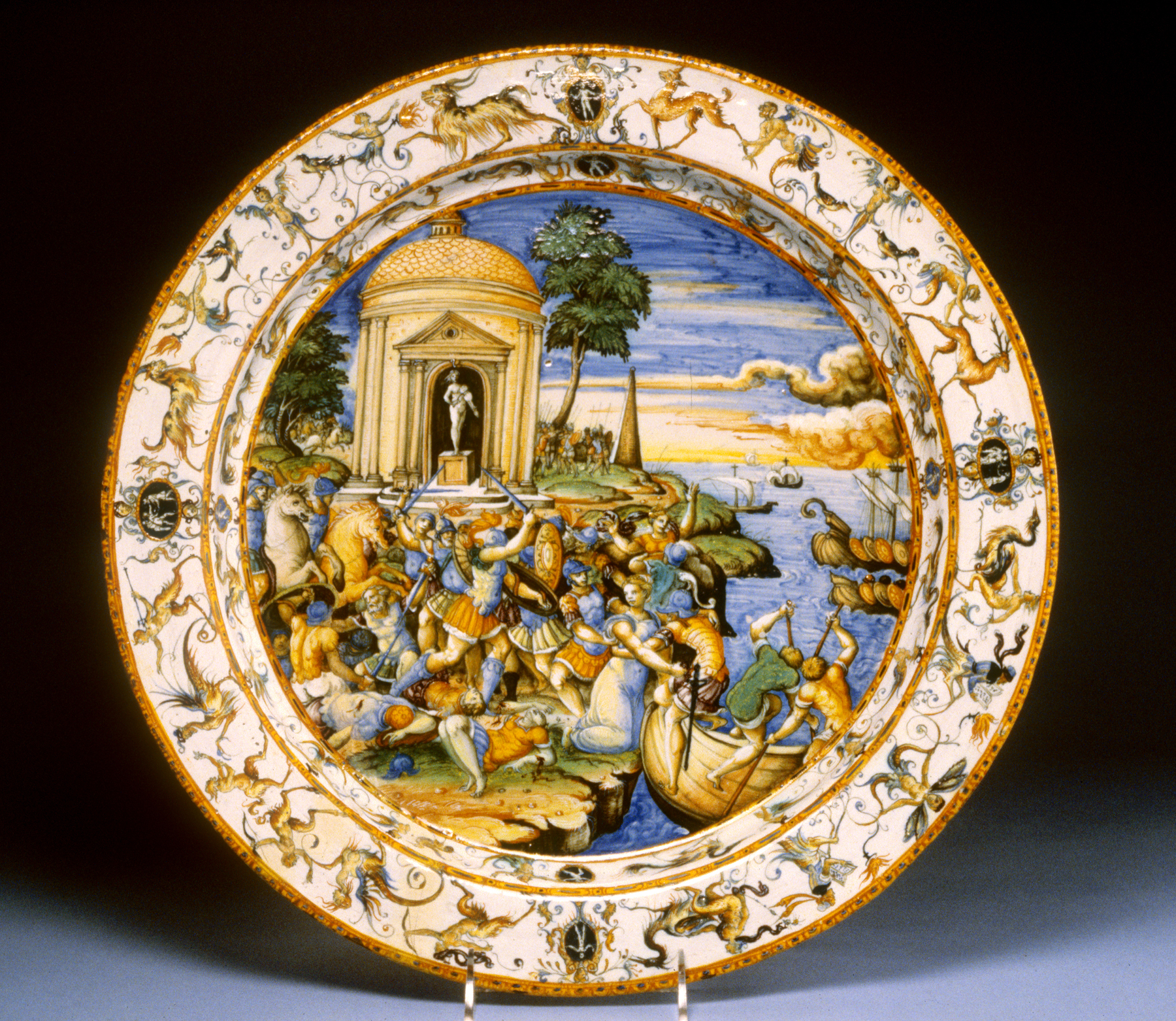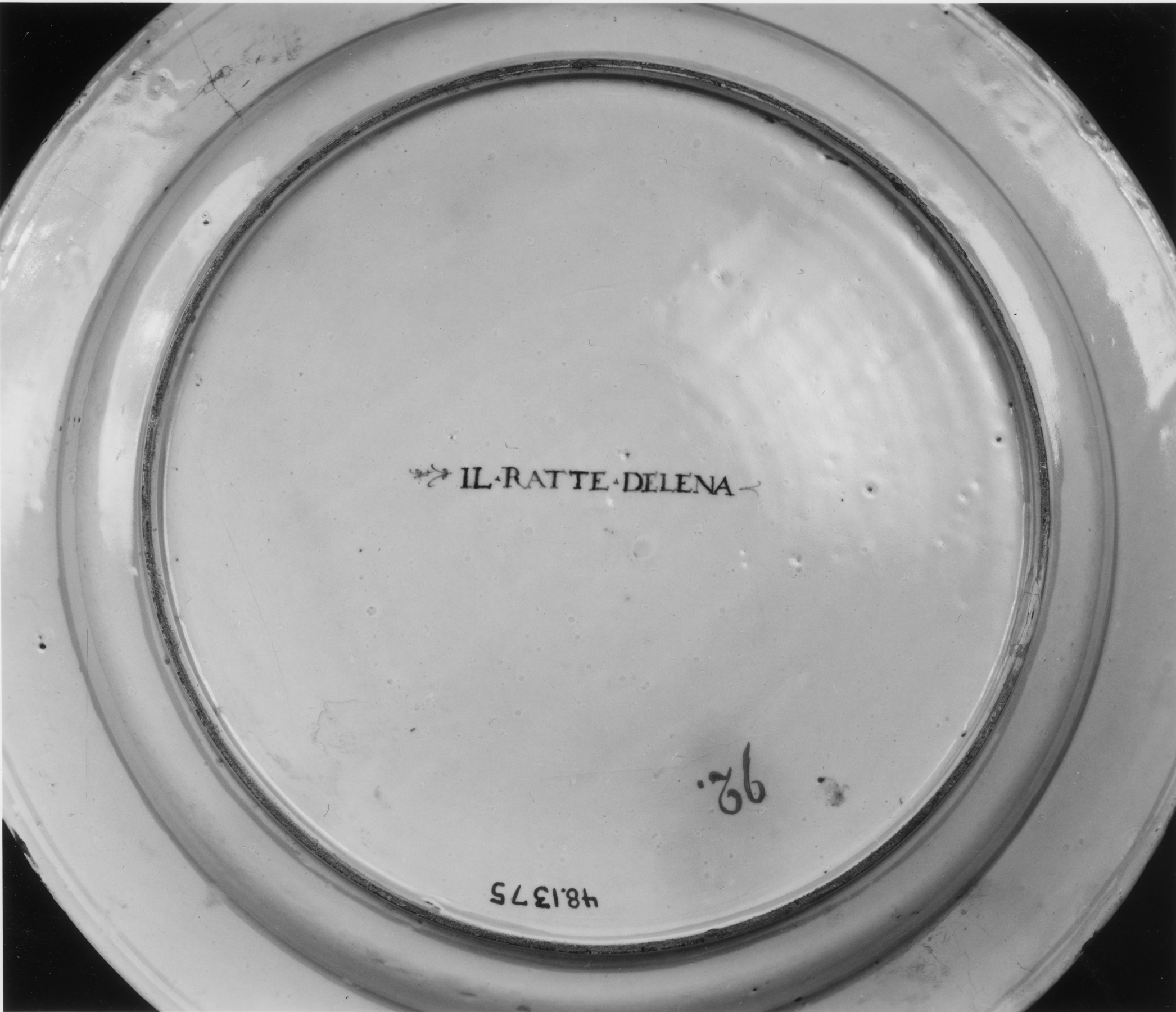Dish with the Abduction of Helen
(Renaissance Europe )
This dish depicts the abduction of Helen, an episode at the onset of the Trojan War recounted by many ancient authors including Homer in his Iliad and that was well known during the Renaissance. The goddess Venus promised Prince Paris that he could marry Helen, the most beautiful of mortal women, though Helen was already married to the King of Sparta. There are defferent versions of the story in antiquity and later as to how Paris and Helen happened to find themselves on the island of Cythera (dedicated to Venus), but there she was abducted by Paris and taken to Troy. Her kidnapping prompted the Greeks to attack and destroy Troy. Since Trojans fleeing their burning city were thought to have founded many cities in Europe including Rome and Venice, the appeal of the subject of Helen’s abduction lay as much in its historical consequences as in the opportunity to depict a subject with sex appeal. The violence of the abduction here may be contrasted with how the abduction is treated in a Venetian painting from the 1460s intended to celebrate a marriage (see 37.1179). The back of the dish is stained with green and includes yellow-ochre concentric circles; in the center, in blue block letters is the inscription, “IL RATTE DELENA” (the rape of Helen)
This scene was likely influenced by an engraving made after a drawing by Raphael, and exemplifies the ‘istoriato’ (story telling) style. The ‘grotesque’ figures around the rim also reveal a fascination with Classical antiquity, as they were influenced by painting designs rediscovered in Emperor Nero’s Palace during the fifteenth century. This dish was produced by the Fontana Family Workshop, a renowned maiolica workshop in Urbino during the second half of the sixteenth century. For more by the Fontana family workshop, click on the name in the creator field; for more on ‘istoriato’ wares, see 48.1487; for ‘maiolica’ in general, see 48.1336.Inscription
Provenance
Provenance (from the French provenir, 'to come from/forth') is the chronology of the ownership, custody, or location of a historical object. Learn more about provenance at the Walters.
F. Spitzer Collection [date and mode of acquisition unknown] [no. 1143]; H. Wencke Collection, Hamburg [date and mode of acquisition unknown] [no. 92 (?)]; Seligmann, Paris [date and mode of acquisition unknown]; Henry Walters, Baltimore, 1908, by purchase; Walters Art Museum, 1931, by bequest.
Exhibitions
| 1993 | A Renaissance Puzzle: Heemskerck's Abduction of Helen. The Walters Art Gallery, Baltimore. |
Geographies
Italy, Urbino (Place of Origin)
Measurements
2 3/16 x 17 1/8 in. (5.5 x 43.5 cm)
Credit Line
Acquired by Henry Walters, 1908
Location in Museum
Accession Number
In libraries, galleries, museums, and archives, an accession number is a unique identifier assigned to each object in the collection.
In libraries, galleries, museums, and archives, an accession number is a unique identifier assigned to each object in the collection.
48.1375




